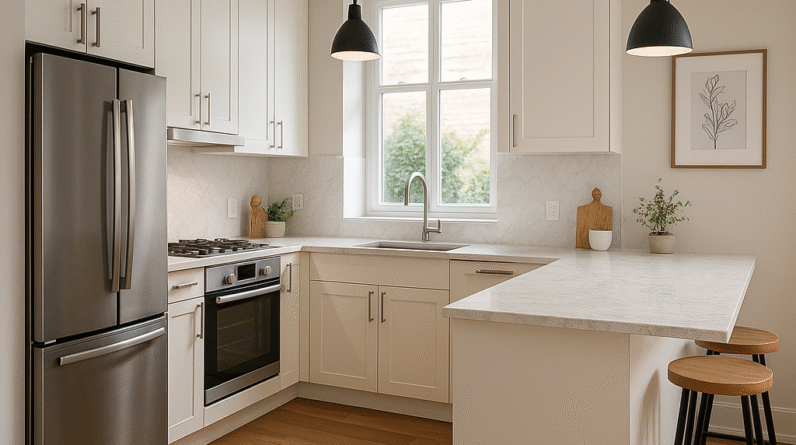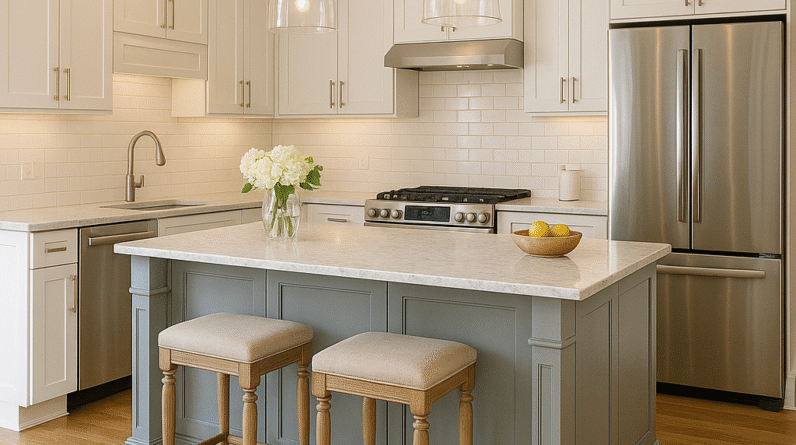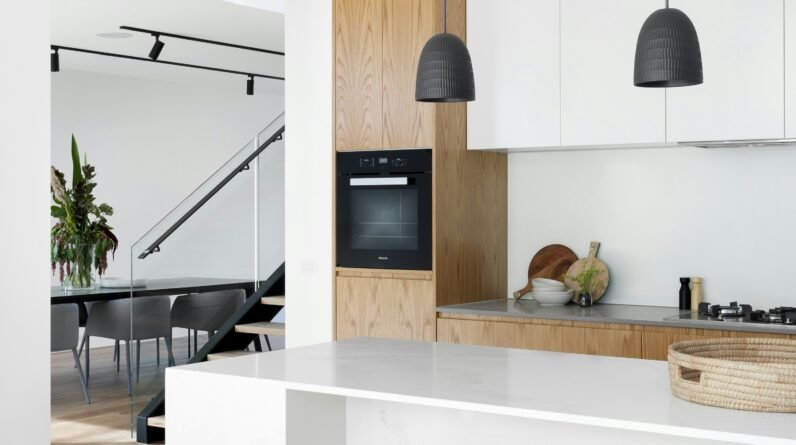
What Costs The Most In A Kitchen Remodel?
What Costs The Most In A Kitchen Remodel? Are you considering remodeling your kitchen but unsure of the costs involved? Look no further! In this article, we’ll explore the primary factors that can significantly impact the budget of your kitchen renovation project. From appliances to materials, we’ll highlight the key elements that tend to carry the heaviest price tags. By understanding what costs the most in a kitchen remodel, you’ll be better equipped to plan and budget for your dream culinary space. So, let’s get started!
Layout and Design
1. Hiring a professional designer
When embarking on a kitchen remodel, one of the most important decisions you will make is whether or not to hire a professional designer. While it may seem tempting to take on the design aspect yourself, enlisting the help of a professional can make a significant difference in the outcome of your project. A professional designer has the expertise and experience to bring your vision to life while ensuring that the layout and design are functional and aesthetically pleasing. They can also assist in creating a cohesive look throughout the space, helping you select the right cabinetry, countertops, appliances, flooring, plumbing fixtures, lighting fixtures, and more.
2. Structural changes and modifications
When considering a kitchen remodel, structural changes and modifications should not be overlooked. These changes can often have a significant impact on the overall cost of your project but can also greatly enhance the functionality and flow of your kitchen. Structural changes can include knocking down walls to create an open-concept layout, adding an island or a breakfast bar, or even expanding the overall size of the kitchen. It is essential to consult with a professional contractor or architect to ensure that any structural changes or modifications are feasible and comply with local building codes.
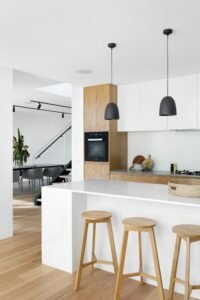
Cabinetry and Countertops
1. Custom-made cabinets
When it comes to cabinetry, custom-made options are often the top choice for homeowners looking for a high-quality, personalized look. Custom cabinets allow you to maximize your storage space and tailor the design to your specific needs and preferences. While they may come at a higher price point compared to pre-fabricated options, the durability and craftsmanship of custom cabinets make them a worthwhile investment. Additionally, custom cabinets can be made to fit any awkward spaces or unique kitchen layouts, ensuring that every inch of your kitchen is utilized efficiently.
2. High-end countertop materials
One of the standout features in any kitchen remodel is the countertop material. High-end countertop materials, such as granite, quartz, or marble, can elevate the appearance of your kitchen and add a touch of luxury. These materials not only provide a durable and long-lasting surface but also come in a variety of colors and patterns to suit any design aesthetic. While high-end countertop materials may be more expensive, they offer greater longevity and can significantly increase the resale value of your home.
Appliances
1. Top-of-the-line appliances
Investing in top-of-the-line appliances is another area where costs can quickly add up in a kitchen remodel. However, high-quality appliances are an essential component of any functional and efficient kitchen. These appliances often come with advanced features, improved performance, and sleek designs. Whether you opt for a professional-grade range, a state-of-the-art refrigerator, or a smart dishwasher, investing in top-of-the-line appliances can enhance your cooking experience and add value to your kitchen.
2. Specialized or custom appliances
In addition to top-of-the-line appliances, specialized or custom appliances can significantly impact the cost of your kitchen remodel. These appliances are tailored to meet specific needs or design preferences, such as built-in coffee machines or wine coolers. While they may come at a premium price, these specialized appliances can add a level of convenience and luxury to your kitchen that is unmatched by standard options.
Flooring
1. High-quality flooring materials
When it comes to flooring, it’s important to choose high-quality materials that can withstand the daily traffic and demands of a kitchen. Common options for kitchen flooring include hardwood, tile, and laminate. While each material has its own pros and cons, investing in high-quality flooring materials is essential for durability and longevity. Hardwood floors, for example, can add warmth and elegance to your kitchen, while tile floors offer easy maintenance and a wide range of design options.
2. Labor costs for installation
In addition to the cost of materials, labor costs for flooring installation should also be taken into account. Depending on the type of flooring you choose, installation can be a complex and time-consuming process, requiring the expertise of professional contractors. Labor costs can vary depending on factors such as the size of the kitchen, the complexity of the installation, and the location of your home. It is advisable to obtain multiple quotes from reputable contractors to ensure that you are getting a fair price for the installation of your chosen flooring material.
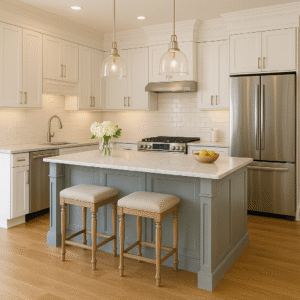
Plumbing
1. Replacing or relocating plumbing lines
When remodeling a kitchen, you may find the need to replace or relocate plumbing lines to accommodate the new layout and design. This can involve hiring a professional plumber to reroute pipes, install new plumbing fixtures, or reconfigure the water supply and drainage system. The cost of plumbing work can vary depending on the complexity of the project and the extent of the changes required. It is crucial to work with a licensed and experienced plumber to ensure the job is done correctly and to code.
2. Installing new fixtures
In addition to replacing or relocating plumbing lines, installing new fixtures is another factor that can contribute to the overall cost of a kitchen remodel. Upgrading to high-quality faucets, sinks, and other plumbing fixtures can enhance the functionality and aesthetic appeal of your kitchen. It is important to consider both the initial cost of the fixtures and any associated installation charges when budgeting for this aspect of your remodel.
Electrical Work
1. Upgrading electrical system
As technology advances, so does the need for an upgraded electrical system in our kitchens. When remodeling, it is essential to evaluate the electrical needs of your kitchen and consider upgrading the electrical system if necessary. This can involve installing additional outlets, upgrading circuit breakers, or rewiring the kitchen entirely. Electrical work should always be done by a licensed electrician to ensure safety and compliance with electrical codes.
2. Installing new lighting fixtures
Installing new lighting fixtures is another aspect of a kitchen remodel that can significantly impact both the functionality and ambiance of the space. Whether it’s recessed lighting, pendant lights, or under-cabinet lighting, the right lighting fixtures can transform your kitchen into a well-lit and inviting environment. While the cost of lighting fixtures can vary greatly depending on the style and brand, investing in high-quality fixtures is crucial for optimal lighting and longevity.
Backsplash and Wall Finishes
1. Unique or decorative tile choices
When it comes to backsplash and wall finishes, there are countless options to choose from. Unique or decorative tile choices can add personality and style to your kitchen, serving as a focal point or complementing the overall design. From colorful mosaic tiles to intricate patterns, the cost of the tile itself may vary depending on the material and design. It is also important to factor in the cost of labor for installation, particularly if the chosen tile requires intricate or custom work.
2. Custom finishes or wall textures
In addition to tile choices, custom finishes or wall textures can provide a unique and visually appealing touch to your kitchen remodel. From faux finishes to textured walls, these custom options can add depth and character to your space. However, custom finishes and wall textures often require the skills of a professional painter or contractor, adding to the overall cost of the project.
Sinks and Faucets
1. Designer or high-end sink models
When it comes to sinks, designer or high-end sink models can elevate the aesthetic appeal of your kitchen while offering enhanced functionality. These sinks often come in a variety of materials, such as stainless steel or fireclay, and showcase innovative features such as extra deep basins or built-in accessories. While designer sinks may come with a higher price tag, they can serve as a statement piece in your kitchen, adding value and style.
In conjunction with a high-end sink, investing in quality faucet fixtures is essential for both style and functionality. The right faucet can contribute to the overall design aesthetic of your kitchen while providing easy control over water flow and temperature. Whether you opt for a touchless or pull-down faucet, choosing a high-quality fixture is crucial to avoid leaks and ensure long-term durability.
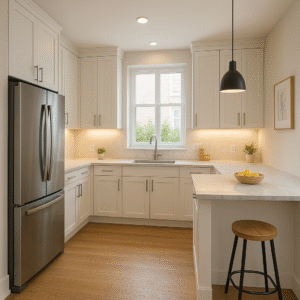
Windows and Doors
1. Replacing windows with energy-efficient models
Replacing windows with energy-efficient models can have a significant impact on the overall cost of a kitchen remodel. Energy-efficient windows not only help to reduce heating and cooling costs but also enhance the comfort and noise reduction within your kitchen. While the initial cost of energy-efficient windows may be higher, they can lead to long-term savings on your energy bills while contributing to the overall value of your home.
2. Custom or specialty door options
In addition to windows, custom or specialty door options can also factor into the cost of a kitchen remodel. Whether you opt for a unique glass-paneled door or a custom sliding door, these options can provide a distinct touch to your kitchen while ensuring privacy, natural light, and easy access to outdoor spaces. Custom or specialty doors may come at a higher price due to the craftsmanship and customization required.
Extras and Miscellaneous
When undertaking a kitchen remodel, it is essential to consider additional expenses such as permits and inspections. Depending on the scope of your project, you may need to obtain permits from your local building department to comply with regulations and ensure the safety of the construction. The cost of permits can vary depending on the location and the specific requirements of your project. Additionally, inspections may be required at various stages of the remodel to ensure compliance with building codes.
2. Unexpected construction issues
No matter how well you plan, unexpected construction issues can arise during a kitchen remodel. These issues can include hidden structural damage, faulty wiring, or plumbing problems that only become apparent once the project is underway. It is important to set aside a contingency budget to deal with these unforeseen issues to prevent delays and additional costs. Working with experienced professionals and conducting a thorough inspection of the space before beginning the remodel can help minimize the risk of unexpected construction issues.
3. Designer accessories and finishes
To truly complete the look and feel of your kitchen remodel, designer accessories and finishes can provide the finishing touches that tie everything together. From unique cabinet hardware to stylish window treatments, these accessories can enhance the overall aesthetic appeal of your kitchen and make it truly feel like your own. While the cost of designer accessories and finishes can vary depending on your personal style and preferences, investing in these details can elevate the overall look and functionality of your space.
In conclusion, a kitchen remodel can be a significant investment, but the results are often worth the cost. When budgeting for your project, it is crucial to consider the various factors that can impact the overall cost, such as hiring a professional designer, structural changes, cabinetry and countertops, appliances, flooring, plumbing, electrical work, backsplash and wall finishes, sinks and faucets, windows and doors, as well as extras and miscellaneous expenses. By carefully planning and prioritizing your needs and wants, you can create a functional and beautiful kitchen that meets your budget and exceeds your expectations.


